
Nissan X-Trail review 2022

Introduction
Nissan’s best-known SUV, the X-Trail, has been around for over 20 years – and now it’s had an overhaul.
Now in its fourth generation the X-Trail’s design has been modernised. And it's not just the looks that have returned to the drawing board for a re-think.
Nissan is on the offensive as it moves towards electrification, with the recently released Ariya now joined by the X-Trail, which has had the hybridisation treatment.
As the name suggests, it's a rugged off-roader designed to top Nissan’s UK range, which is now dominated by crossovers.
The old front was rounded, with the grille limited to the middle rather than sprawling itself across the entire front end. The new grille takes inspiration from this, but it looks far more imposing. Two relatively thin sets of lights sit on either side, one on top of the other.
Select's rating score* - 3.6 / 5
At A Glance
Although the roundedness is still there, the sides of the lower lights are prominently chiselled, appearing like squared-off cheekbones, giving the car significant presence. There is a wider lower grille, too, which gives an open-mouthed effect.
From the sides, the chunky skirts add to the Nissan’s off-road appearance, while the roofline has a very modest slope towards the rear.
The roof is a different colour from the rest of the bodywork on some models, while towards the bottom of the rear, silver diffuser-shaped bodywork adds to the X-Trail’s colourful personality.
Nissan isn't famed for stunning-looking vehicles, and its models aren't to everyone's tastes. The X-Trail is no different, but it is at least interesting rather than bland.

Key Features
Five trim levels are offered on the Nissan X-Trail.
The entry-level Visia trim features 18-inch diamond cut alloys, front and rear LED lights, rear parking sensors and a seven-inch colour digital instrument display.
The Accenta Premium trim adds in front parking sensors, a rear-view camera, an i-Key (which allows you to start the engine without inserting the key), and an eight-inch infotainment screen. You also get wireless Apple CarPlay, wired Android Auto, adjustable lumbar support, and dual-zone air conditioning.
At mid-level, the N-Connecta trim upgrades the infotainment to a 12.3-inch screen with connected services, a 12.3-inch digital instrument display, privacy glass, roof rails, an around view monitor and ambient lighting on the central console.
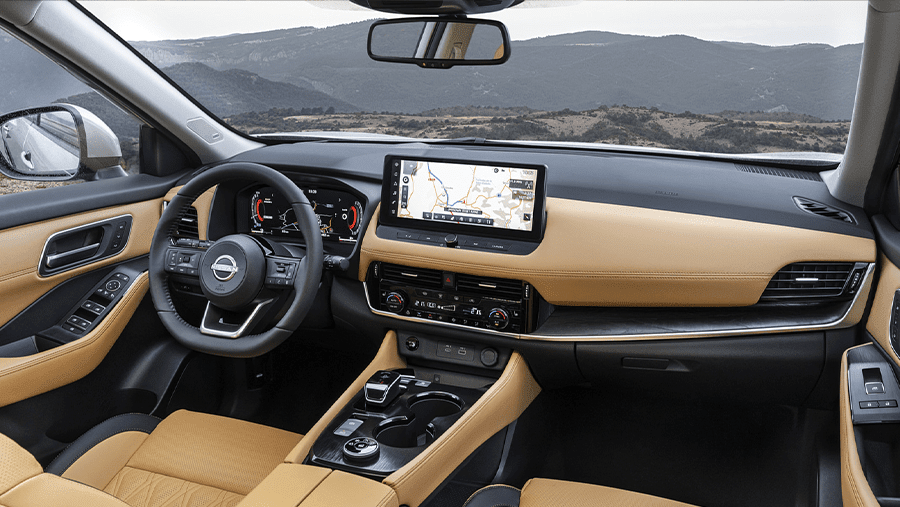
The Tekna grade adds in 19-inch rims, a hands-free powered tailgate, ProPILOT Assist with Navi-Link, a 10.8-inch head-up display, a wireless phone charger and electronically adjustable memory front seats.
The top-of-the-tree Tekna+ trim goes slightly further, adding in 20-inch wheels, a premium Bose sound system with ten speakers and black quilted premium leather seats in the front.
In terms of powertrains, there are three to choose from, and all are hybrids with 1.5-litre three-cylinder turbocharged petrol units.
The VC-Turbo 163 Mild Hybrid comes with a CVT gearbox. There are also two e-Power models – the 204 and 213 – and the numbers refer to the horsepower (PS) produced.
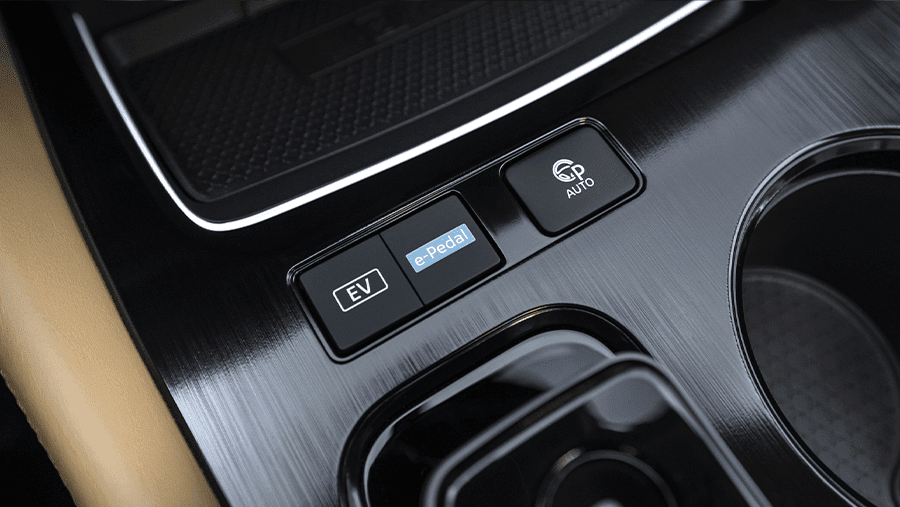
In the e-Powers’ case, the engine doesn’t drive the wheels. Instead, the combustion lump delivers power to the electric motor, which operates the front axle. While this is an unusual configuration, it’s not unheard of.
If you opt for the e-4orce four-wheel drive system, you’ll get a second electric motor placed at the rear.
All powertrains are offered with all trims, except for the entry-level Visia trim, which is only available with the VC-Turbo mild hybrid.

Performance & Drive
The e-Power 213 gets from nought to 62mph in 7.0-seconds. That is pretty good.
Admittedly, compared with other hybrids, it doesn't feel swift to drive, lacking the instantaneous launch off the line that you'd find in a typical plug-in hybrid, despite Nissan’s promises of rapid torque delivery.
While the engine is generally calm, flooring the accelerator causes it to roar a bit as the batteries request power to drive the wheels.
Because the engine’s behaviour isn’t the same as if it were connected directly to the axles, the sound it produces does take some getting used to.
Nevertheless, under normal driving, the X-Trail’s e-Power engine is quiet at all speeds, creating something of a serene driving experience. Although, of course, an all-electric SUV or a plug-in hybrid in all-electric mode will surpass this if calmness is a priority.
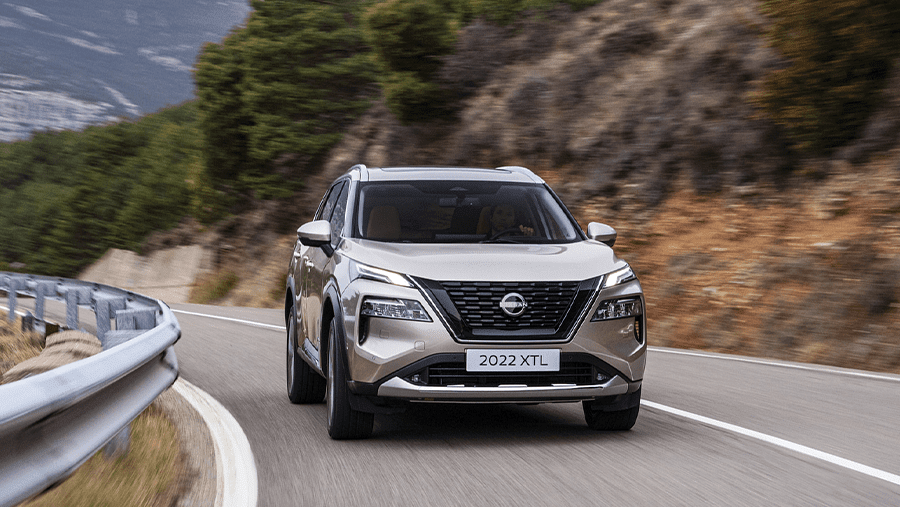
Although the technology in terms of the engine feeding the electric motors is clever, in performance terms, it doesn't really offer a sufficient benefit over the VC-Turbo to be worth the extra money.
The lower-powered 204PS variant also has similar performance levels, getting from zero to 62mph in 8.0-seconds, so there’s little benefit in paying extra for 9PS more.
The ride is very soft and absorbing, which is excellent for navigating rougher roads and off-road terrain. But when driving the Nissan along ordinary roads, the odd lump and bump can cause the car to feel a tad bouncy at lower speeds.
Unfortunately, the soft and springy ride means the X-Trail isn't set up for keen handling.

As a result of the suspension setup, it doesn't corner exceptionally well, creating quite a bit of body roll in the bends. And we found ourselves having to back off more than anticipated to thread the Nissan around the twistier corners on backroads.
It understeers on entry, almost resisting your turn-in, meaning you have to turn the wheel further to keep the car centred in the lane on your way around.
On the exit from corners, the X-Trail doesn't find grip particularly early, meaning you need to delay accelerating away as the road straightens out again. This is while driving it at its limits, though.
Most will be okay with the Nissan X-Trail for everyday driving, but keener drivers wanting more athletic handling will need to look elsewhere.

Around town, of course, the X-Trail feels big, but it's easy to drive. At higher speeds, such as on motorways, the X-Trail is a comfortable cruiser and generally feels more assured.
The 19-inch alloys are excellent, although smaller wheels are available on the lower trims, offering even more comfort.
In addition, stopping power is aided by Nissan's 'e-Pedal Step', which automatically brakes when you take your foot off the accelerator.
This charges a battery which cuts down a little on the use of the electric motor, improving the range and saving some fuel. Mind you, in the grand scheme of things, it doesn’t prove transformative as far as the miles-per-gallon figures are concerned.

Running Costs & Emissions
Depending on the configuration, the VC-Turbo manages 38.5 to 43.8mpg, producing emissions of 146 to 167g/km of CO2.
The e-Power 204 accomplishes 47.3 to 48.6mpg, emitting 132 to 134g/km CO2.
The most powerful model, the e-Power 213, produces 43.1 to 44.7mpg, emitting 143 to 145g/km of CO2.
None of those is terrible for a big SUV. Still, given all the hybridisation technology in the e-Power versions, we were surprised that there isn't a far more significant jump in economy figures compared with the VC-Turbo.
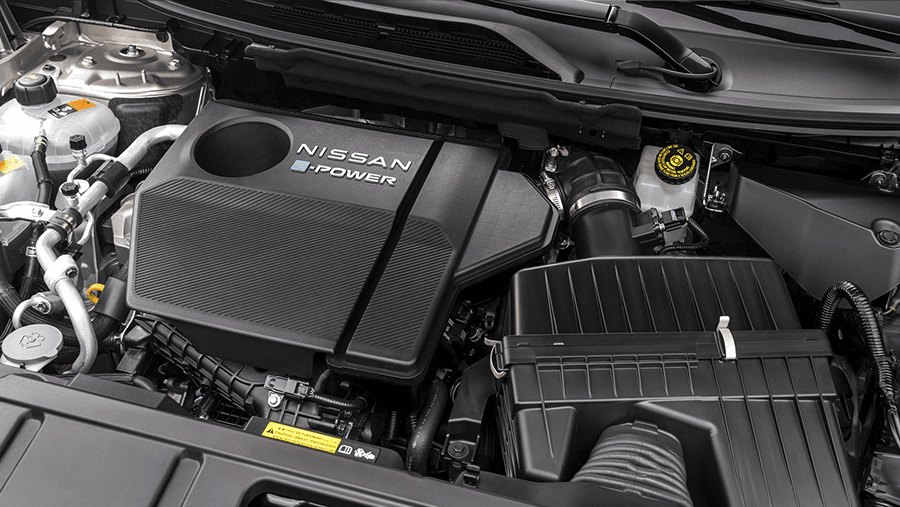
Considering that plug-in hybrids are regularly claiming figures in the ballpark of 200mpg and only double-digit emissions figures, it somewhat defeats the point of the e-Power model. It seems like it's not worth the additional money.
In terms of reliability, Nissan as a whole tends to be a tad below par, with recent surveys putting it reasonably near the bottom of the table.
Of course, Nissan will be hoping that the hybrid technology on the all-new X-Trail brings about a change in fortunes, but it’s too early to predict this with any confidence.
And just for your information, a three-year, 60,000-mile warranty is all that’s offered as standard. That is way less than Hyundai’s five and Kia’s famed seven-year guarantee. But this won’t bother you, seeing you’re in the market for leasing the X-Trail.

Interior & Technology
The Nissan X-Trail’s interior has had an overhaul and looks inviting.
While it doesn't offer the creature comforts of the exorbitantly priced Range Rover, it appears well-designed and attractive, with lots of plush, soft-to-the-touch surfaces.
Thin, cheaper-feeling plastics are hidden away from view, but they are there if you look closely enough.
The X-Trail’s steering wheel has buttons on the spokes, which are intuitively laid out and suitably sized. And the impressive-looking 12.3-inch infotainment screen sits on the dashboard, sticking up over the top of it.

The system is responsive, clear and easy to use, and it's simple to learn how to navigate through the menus to find what you're looking for.
Thankfully, physical dials and buttons remain to adjust the climate control system, making changing the temperature on the move simple, unlike some cars, which make you to take your eyes off the road because the controls have been integrated into the infotainment system.
While there are flashes of silver trim, in an ideal world, we’d have preferred a bit more, as the colour scheme can look a bit monotonal.
Nevertheless, it is a significant improvement on older Nissan interiors and feels solid, with a decent build quality.

Practicality & Boot Space
There are plenty of adjustments in the X-Trail’s driver's seat and steering wheel - the former being electric in our test car. It comes with adjustable lumbar support, so it’s easy to get comfy.
As you’d imagine, the SUV’s high driving position helps with visibility, and the vehicle's wide stance means there's more separation between the pillars compared with a family hatchback, improving front visibility.
Thicker pillars compromise the view out of the Nissan’s rear. But parking sensors at the back help with this, along with a rear-view camera on our test car, which is available in Acenta Premium trim and above.
There is lots of space up front, so legroom and headroom won’t be a problem, even for taller drivers.
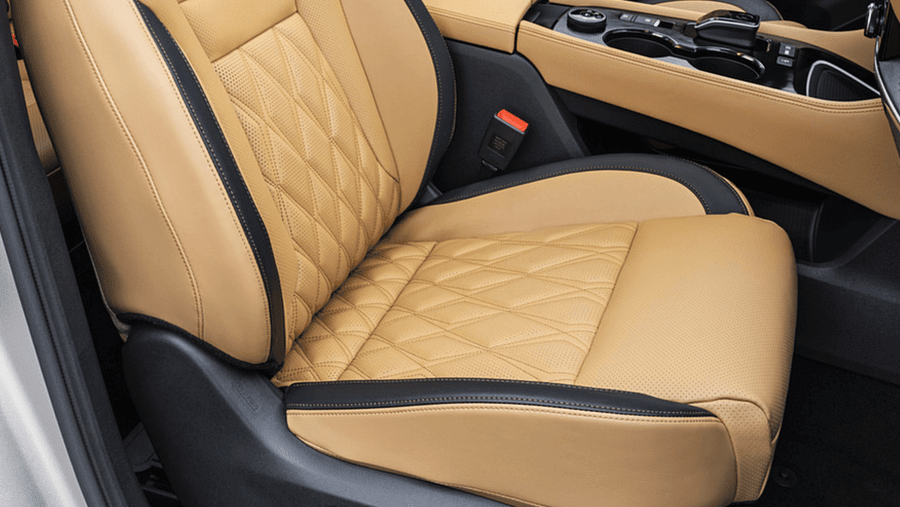
The second row of seats can also be reclined, which will help passengers relax. They won’t need to recline them to fit, though, as they won’t be short of head or legroom either. And, even though there is a slope in the X-Trail’s roofline, it's so slight that it barely takes anything away from the available space.
There is a third row, too, to make the all-new Nissan X-Trail a seven-seater, but it’s an optional extra. The additional two seats will accommodate adults, but you will only want to sit there for a short time. Nevertheless, if you’ve got a couple of kids, they’ll be fine to sit there.
Boot space measures in 575-litres, which expands to 1,396 litres with the middle row folded down, although this measurement is actually relative, as the middle seat can slide forwards to increase the available space further.
The second and third row of chairs fold flat. The middle tier folds in a 60:40 split, which is upgraded to a more convenient 40:20:40 divide on the top two trims.

The floor that is then freed up by folding the seats provides ample, flat space, making it easy to slide large, bulky, heavy items in and out of the X-Trail.
While boot space doesn't reduce to zero with all seven seats in place, you’ll only be able to take a little stuff with you. You will get some additional storage space beneath the boot floor if you opt for the five-seater version, though.
There are two cupholders beneath the dashboard on the centre console, which accommodates a large cubby, and two more in the rear if you fold down the front of the middle seat into an armrest.
The door bins offer a generous amount of storage too.

Safety
The latest Nissan X-Trail has yet to be put through its paces by crash-testing specialists at Euro NCAP, so there's no safety rating available yet.
Nevertheless, the last generation X-Trail was tested in 2014 and scored a five-star rating, and eight other Nissan models have been analysed since then, five of which also earned five stars, with the others getting four.
All models come with rear parking sensors, intelligent cruise control, and intelligent front emergency braking with pedestrian, cyclist, and junction assist.
The Acenta Premium grade and above add in front parking sensors, a rear-view camera, and a washer, while the N-Connecta and above get an around-view monitor with moving object detection.

Options
The default body colour is solid white. But sunset orange, diamond black, gun metallic grey, ceramic grey, brilliant silver, champagne silver, diamond red, storm white and electric blue are also offered for several hundred pounds more.
If you don't mind spending more, you can have various two-tone colour combinations, with the roof coloured in black metallic and the main body colour storm white, electric blue, sunset orange, ceramic grey or champagne silver.
Upholstery options include black cloth, black or grey synthetic leather, or black or tan quilted leather, although not all of them are available on all trims.
As we mentioned earlier, the third row of seats to make the X-Trail a seven-seater is an optional extra, while the Glass Roof Pack includes an electric sunroof with a sunshade and roof rails.
If you choose a grade without the Bose premium sound system, you can add it individually if you are okay with paying a bit more.
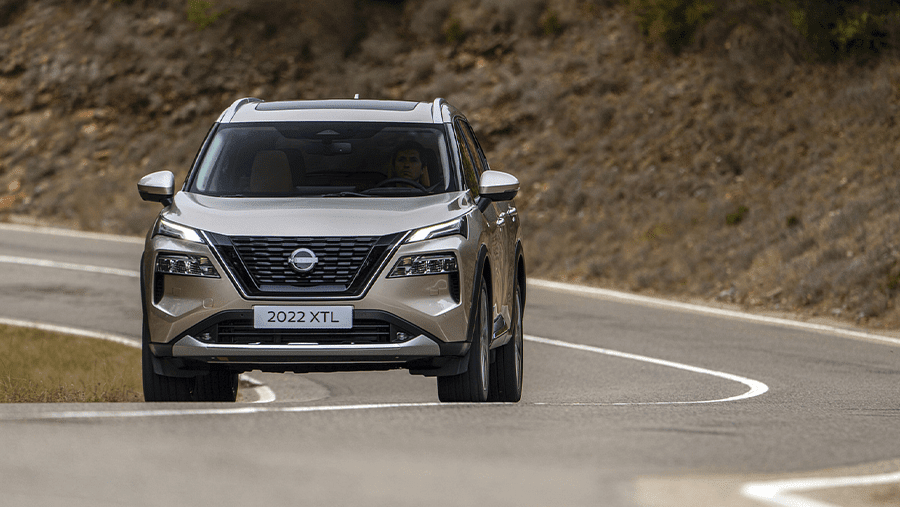
Rival Cars
Given the all-new Nissan X-Trail is a relatively large SUV, there are countless alternatives depending on which areas are important to you.
The Skoda Kodiaq, for example, has a more refined ride and better handling, so it’ll appeal to keener drivers.
Mazda’s CX-60 is also better to drive than the latest X-Trail.
If roominess is essential, then the Hyundai Santa Fe may suit you better, plus it also offers a bigger boot. But, at the same time, if the latter criteria are key, then the Kia Sorento has a boot that’s even bigger still.

If roominess isn’t all that important, then downsizing to the Nissan X-Trail’s smaller sibling, the Qashqai, will save some money.
And, if the Qashqai appeals, then it’s worth checking out the Ford Kuga.
The Mitsubishi Outlander and Honda CR-V are a couple of other options to consider.
And, if money is no object, then Land Rover has any number of SUVs, including the Discovery Sport, while Volvo offers the XC60 and the larger XC90.

Verdict & Next Steps
The all-new Nissan X-Trail is a good all-rounder that's practical and provides a civilised level of performance.
It is not really a driver’s car, though, so the X-Trail is something you lease with your head rather than your heart, and the handling will leave keener drivers disappointed.
Nevertheless, the suspension makes it very comfortable, and the power unit remains quiet unless you're flooring it.
Although the miles-per-gallon figures are good for an SUV, it still seems a bit of a let-down given all the clever tech on board and the electric motors.
In addition, if you want the e-Power with four-wheel drive and seven seats, those three things combined will likely add around 15 per cent to the list price, which will impact what you pay when you lease.
All things considered, the all-new Nissan X-Trail is well-equipped, spacious and has a nice interior, but some rivals are better to drive and even more practical.
Where to next?
View our latest Nissan X-Trail Leasing Deals - from just £310.20 per month inc VAT**
Looking for a great leasing deal? Check out our incredible range of Special Offers
New family SUV? Read our latest Car Reviews and find the right model for you
Want to know more about leasing? Take a look at our comprehensive Leasing Guides
Interested in everything motoring? Why not catch up on all the latest Car Leasing News.
*Score based on Select’s unique meta score analysis, taking into account the UK’s top five leading independent car website reviews of the Nissan X-Trail
**Correct as of 15/11/2022. Based on 9 months initial payment, 5,000 miles over a 48 month lease. Initial payment equivalent to 9 monthly payments or £2,791.80 Ts and Cs apply. Credit is subject to status.



















